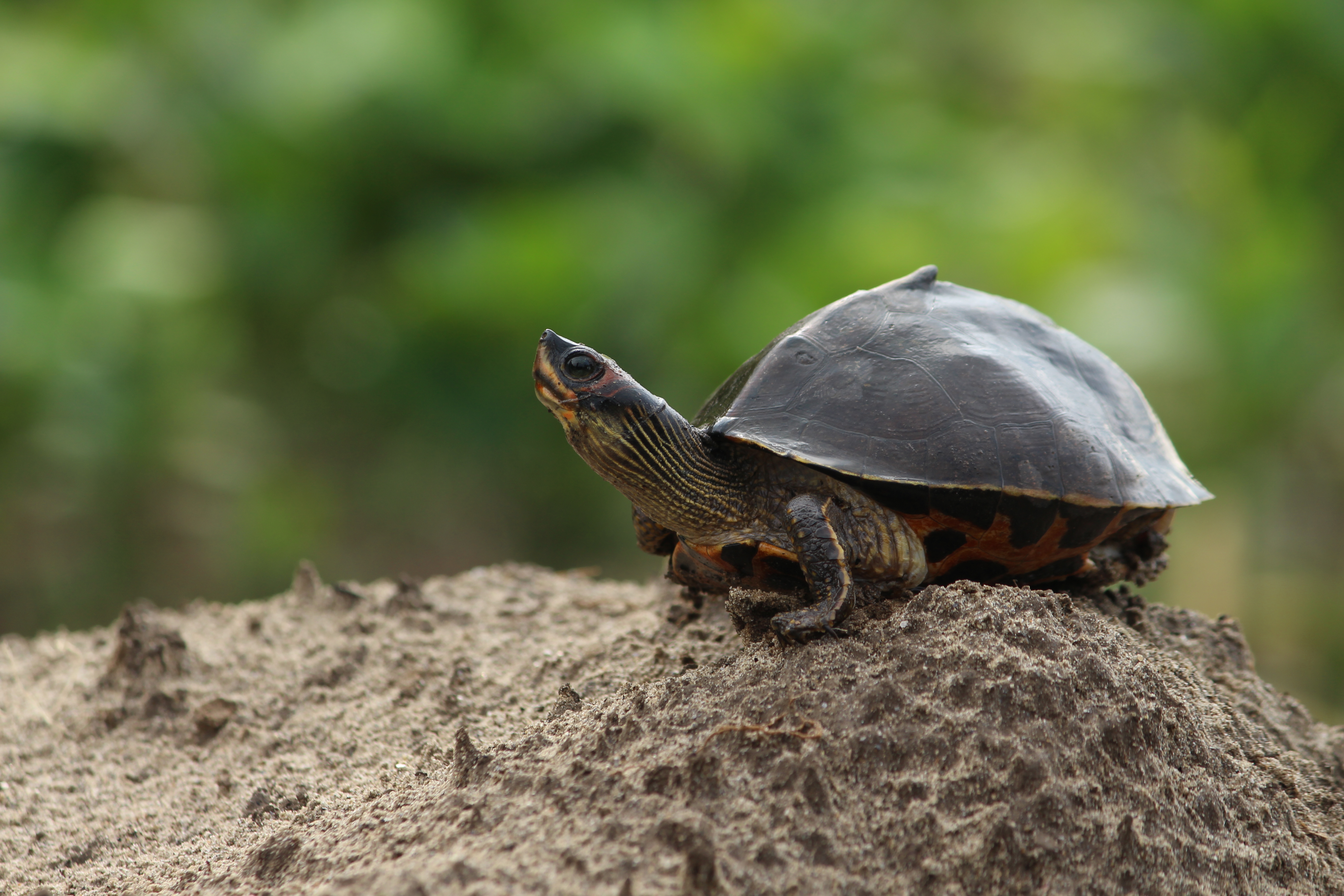Protecting India’s wildlife has always been about making space and ensuring co-existence rather than just confining species to Protected Areas. Wildlife Trust of India (WTI) has been working in several wet landscapes outside Protected Areas to instill a community-based conservation model to protect both flagship and lesser known species and its habitat. One such intervention was reviving an isolated population of Indian Roofed Turtles (Pangshura tecta) which was carried out by WTI’s outreach wing- Rapid Action Project (RAP). The species is distinguished by a distinct roofed carapace.
Though common across its distribution range, there was a rapid decline in the population of the turtle in the northern part of the Indian state of West Bengal. Only recorded case was from an old temple pond in Lota devi temple, situated near the Karala river. According to Hindu Mythology Turtles are incarnation of the God Vishnu –the preserver and protector of the universe, and are revered as Kurma Avatar (Incarnation in the form of a Turtle). Importantly, the temple pond serves as storehouse of representative aquatic fauna, including anurans and fishes of the area.
The cultural significance did help place turtles on the pedestal but people unknowingly choked the pond waters with refuse of worshiping materials such as oil, lamps, incense-sticks etc. Turtle eggs were poached by people and predated by dogs, adding pressure on this breeding population. To solve the problems, WTI collaborated with a local grassroots organization named SPOAR.
The temple pond was fenced with barbed wire fence to prevent turtle egg loss. A gap was maintained in the fence just above ground level to facilitate the natural movement of turtles between the pond and adjacent Karala river. Turtles were shifted to a make-shift pond and the main pond was dredged, deepened and supplemented with aquatic plants such as Pistia sps., Lemna sps., Ipomea raptans., Spirulina etc. and local fish to create a natural healthy ambience. To provide an ideal nesting and basking ground, a sandy bank with sufficient shade was also ensured.
In order to substantiate the conservation efforts, religious belief was encompassed by installing a Kurma avatar idol altar just outside the fence where people could directly place their daily offerings rather than polluting the pond. The habitat enrichment facilitated successful nesting and hatching. Regular sensitization of the community had also brought about change in attitude and the turtle habitat was nurtured.
The successful intervention continues to have a healthy recovery of the turtle population, keeping the people’s sentiments intact. Controlling the stressors on the pond environment and reducing direct threats on the turtles, has not only helped the roof turtles but also the amphibians using the revered area.
By Debobroto Sircar, Wildlife Trust of India

